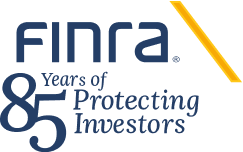The Portfolio Margin and Intraday Trading section of the 2023 Report on FINRA’s Examination and Risk Monitoring Program (the Report) informs member firms’ compliance programs by providing annual insights from FINRA’s ongoing regulatory operations, including (1) regulatory obligations and related considerations, (2) findings and effective practices, and (3) additional resources.
Annual Continuing Education RequirementEffective Jan. 1, 2023, all FSAWP-eligible individuals are required to complete Continuing Education (CE) Regulatory Element annually by Dec. 31 for each remaining year of their FSAWP eligibility.FINRA Rule 1210.09 established a waiver program for eligible individuals who left a member firm to work for a foreign or domestic financial services affiliate of a
SUGGESTED ROUTING:*
Senior ManagementLegal & ComplianceOptions*These are suggested departments only. Others may be appropriate for your firm.
EXECUTIVE SUMMARY
On September 13, 1991, the Securities and Exchange Commission (SEC) approved amendments to the NASD's Rules of Fair Practice creating a separate section relating to options communications with the public. The
Each capital acquisition broker shall develop and implement a written anti-money laundering program reasonably designed to achieve and monitor its compliance with the requirements of the Bank Secrecy Act (31 U.S.C. 5311, et seq.), and the implementing regulations promulgated thereunder by the Department of the Treasury. Each capital acquisition broker's anti-money laundering program must be
(a) Permissible Lending Arrangements; ConditionsNo person associated with a member in any registered capacity may borrow money from or lend money to any customer of such person unless:(1) the member has written procedures allowing the borrowing and lending of money between such registered persons and customers of the member; (2) the borrowing or lending arrangement meets one of the
Form CMA is organized by 14 standards for admission as set forth under Rule 1014(a) and specifies the documents and information required to support each standard. The items listed in this checklist are also organized by standard and focus on the standards and their related documentation and information that an applicant may inadvertently overlook when submitting the application. Firms should treat this checklist as a starting point for preparing Form CMA. Firms are advised to review the rules applicable to a CMA, including Rules 1014 and 1017, together with Form CMA. During the course of the review process, FINRA may request additional documents and information as necessary to render a decision on the application.
An alternative trading system (ATS) is an SEC-regulated trading venue in which a computerized system matches buy and sell orders of securities. An ATS is not a national securities exchange, an ATS may apply to the SEC to become a national securities exchange. An ATS that registers as a broker-dealer must also comply with the obligations associated with being a registered broker-dealer, including FINRA membership and compliance with FINRA rules.
Overview – FINRA’s Funding Portal Rules (FP Rules) apply to firms that register with the U.S. Securities and Exchange Commission (SEC) as funding portals pursuant to the SEC’s Regulation Crowdfunding (Reg CF) and that become FINRA FP members. Prospective FPs should review, in addition to the rules under the SEC’s Reg CF, Regulatory Notice 16-06 (SEC Approval of FINRA Funding Portal Rules
TO: All NASD Members and Other Interested Persons
Attention: Direct Participation Programs Department
The Association's Board of Governors has approved a proposed amendment to Appendix F to Article III, Section 34 of the Rules of Fair Practice which would prohibit sponsors of direct participation programs from offering non-cash sales incentives to NASD members and their associated persons.
A self-directed individual retirement account (IRA) is an IRA held by a custodian that allows investment in a broader set of assets than most IRA custodians permit. Custodians for self-directed IRAs may allow investors to invest retirement funds in “alternative assets” that have unique risks, including a lack of information and liquidity—and the risk of fraud.
